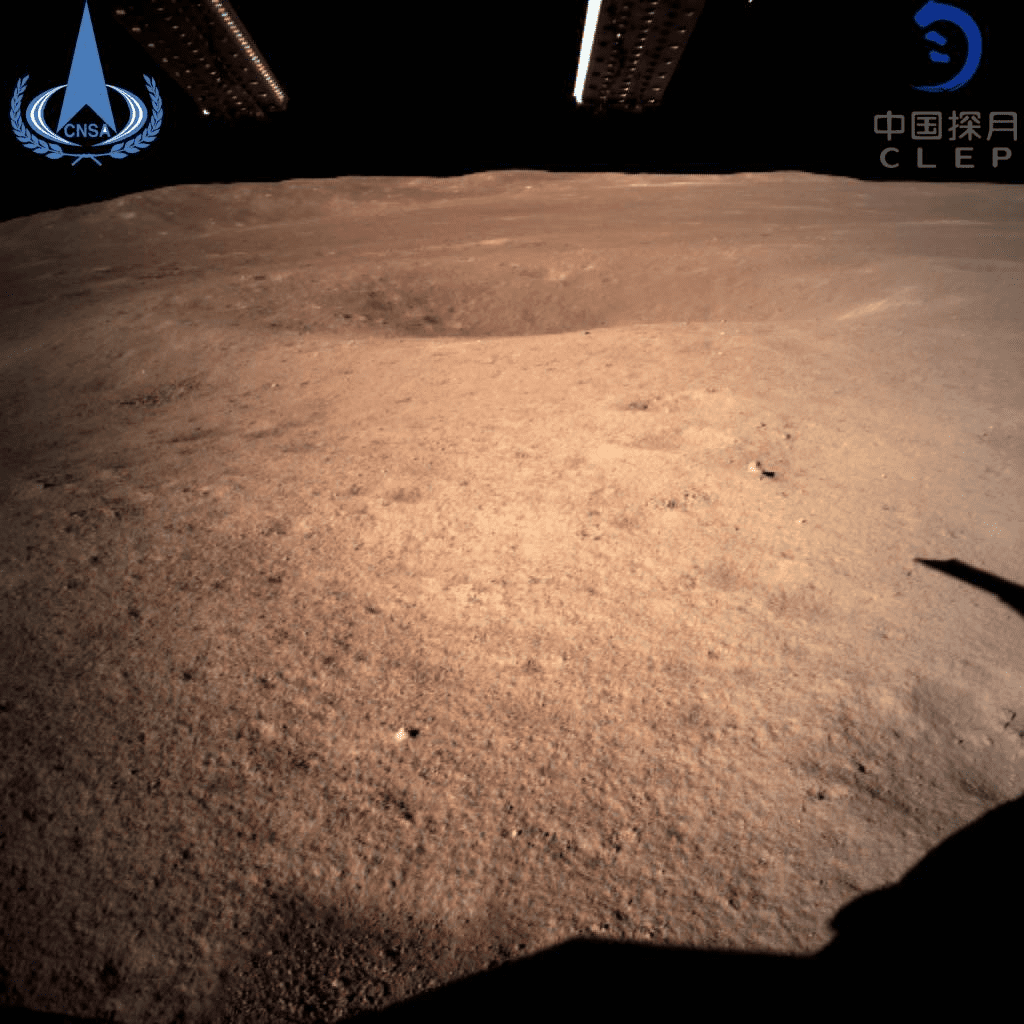
China’s Chang’E-4 mission has given us the first detailed view of the subsurface geology on the far side of the Moon. Using ground penetrating radar on the mission’s rover, scientists observed layers of dust and boulders formed by debris from past impacts on the lunar surface. The radar was able to probe about four-times deeper than previous studies on the near side of the Moon.
Much of the surface of the Moon is covered in a lunar regolith – a loose layer of pulverized rock and dust created by billions of years of meteorite impacts. While the regolith in parts of the near side of the Moon has been studied in detail by several missions, it had not been clear whether the surface geology is similar in underexplored regions of the Moon. The far side of the Moon, most of which is not visible from Earth, is of particular interest because this hemisphere has a thicker crust and consequently less volcanism. Until Chang’E-4, only relatively low-resolution satellite-based radar measurements have been made of far-side regolith.
In early 2019, the Chang’E-4 lander of the Chinese National Space Administration made history by being the first spacecraft to survive a landing on the far side of the Moon. Its landing site lies in the east of the Von Kármán impact crater, which is in the South Pole–Aitken Basin.
Two lunar days
The mission’s rover Yutu-2 was deployed after the landing and it scanned the lunar subsurface with its on-board radar. In a new study, a team of researchers from China and Italy present the results of Yutu-2’s first two lunar days (about 58 Earth days) probing the geology of the lunar far side.
The team found that the Chang’E-4 landing side sits atop a layer of loose deposits reaching up 12 m in thickness. Beneath this, the radar found a second layer of progressively coarsening material with embedded boulders that endures to a depth of around 24 m. This is underlaid by alternating layers of both fine and coarse materials down to a depth of at least 40 m.
“The most plausible interpretation [of the subsurface geology] is that the sequence is made of a layer of regolith overlying a sequence of ejecta deposits from various craters, which progressively accumulated after the emplacement of the mare basalts on the floor of the Von Kármán crater,” the Chang’E-4 scientists write in Science Advances.
“Very high resolution”
“We can see for the first time at very high resolution an ejecta deposit on the moon — how it’s made, the main characteristics, the thickness of the regolith,” team member Elena Pettinelli of the Roma Tre University tells Physics World.
The far-side regolith differs in some ways from the regolith studied on the other side of the Moon. Apollo-era work had suggested that regolith is typically only a few metres thick and sat atop lava flow surfaces. In 2013, a similar radar system used by the Chang’E-3 mission to the near side was only able to probe down to a depth of 10 m. These limits on probing depths on the near side suggest that the regolith on the far side is more porous and contains less ilmenite, which is a radar-absorbing mineral commonly found in the Moon’s volcanic basalts.

China’s Chang’e-4 spacecraft makes historic landing on far side of the Moon
Geophysicist Wenzhe Fa of Peking University — who was not involved in the study — notes that the “exciting” Chang’E-4 radar data shine a light on the geological evolution of the far-side landing site. The regolith structure, he adds, “is the combined result of volcanic eruptions and multiple impact catering events. All of these show that the geological history of the Moon’s far side (especially the South Pole–Aitken Basin) is complex”.
“The tentative identification of buried regolith layers developed on top of ancient crater ejecta deposits is especially interesting,” adds planetary scientist Ian Crawford, of Birkbeck College London, who was not involved in the study. While accessing buried material is a task for future missions, he says these layers “may preserve ancient solar wind and galactic cosmic ray particles which could potentially provide information on the past evolution of the Sun and the solar system’s galactic environment”.
With their initial study complete, the Chang’E-4 researchers will be applying the lessons they learnt in optimizing the processing of the Yutu-2 data to revisit those collected by the earlier Chang’E-3 mission on the near side of the Moon. They will also continue to study the ongoing readings from the far side. Pettinelli is hopeful that the rover may pass over an area of thinner regolith, where it might be possible to see more layers and even the underlying lava deposits.
https://news.google.com/__i/rss/rd/articles/CBMiYmh0dHBzOi8vcGh5c2ljc3dvcmxkLmNvbS9hL2NoaW5hcy1yb3Zlci1wcm9iZXMtZGVlcC1iZWxvdy10aGUtc3VyZmFjZS1vZi10aGUtZmFyLXNpZGUtb2YtdGhlLW1vb24v0gEA?oc=5
2020-02-27 14:13:29Z
52780634559005
Tidak ada komentar:
Posting Komentar